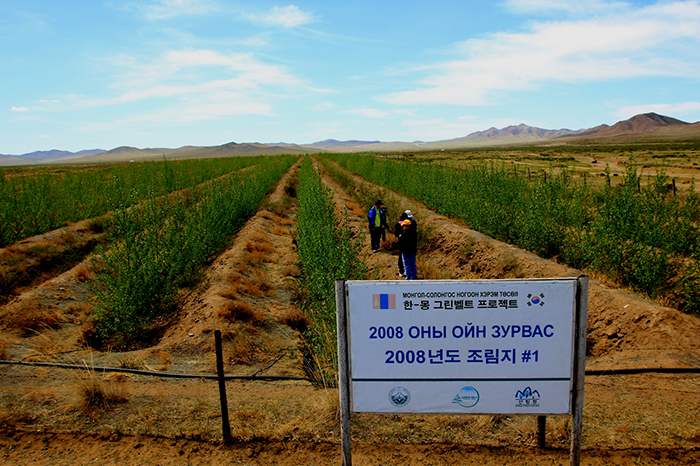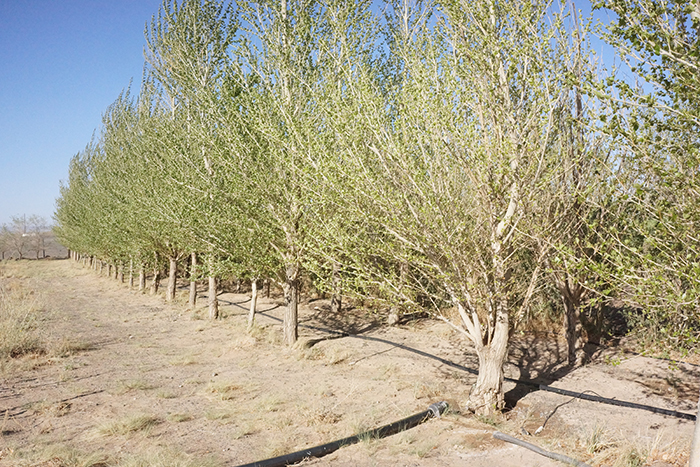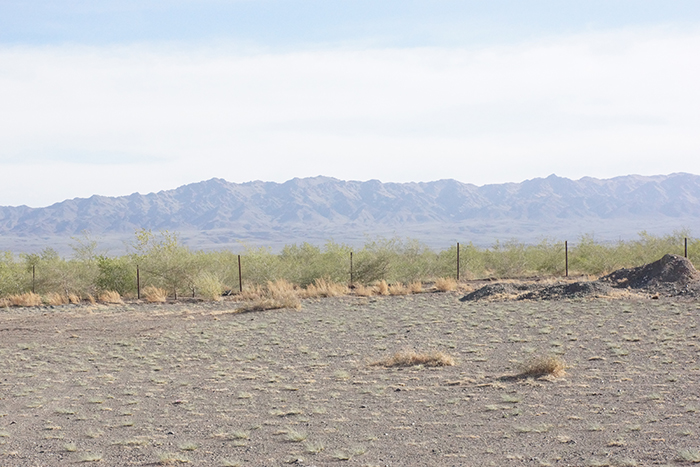
The once arid Lun District in Mongolia's Tov Province is now being covered with lush trees thanks to the Korea-Mongolia greenbelt forestation project.
Arid desert regions of Mongolia, prone to drought and desertification, are now being changed into lush woodlands.
In 2008, the Korea-Mongolia greenbelt forestation project began by planting trees in the Lun District of Tov Province, around two hours by car from Ulaanbaatar, and in Dalanzadgad, the capital of Omnigovi Province, or South Gobi Province.
Korea and Mongolia signed a memorandum of understanding in 2006 to support the Mongolian government's greenification program, which aims to prevent deserts from spreading and, ultimately, make the landlocked country greener.
The trees planted in the desert regions are species that are naturally resilient to arid climates, like the dwarf elm, the salt cedar and the saxaul tree. This year, around 600 hectares of trees were planted. By the end of year, a total of 3,000 hectares of trees will have taken root in the Mongolian desert.

The greenbelt forestation project has planted hundreds of trees in Dalanzadgad, the capital of Omnigovi Province.
Since the project's inception, the Korea Forest Service (KFS) has trained some 200 Mongolian civil servants on afforestation and forest management. The KFS also set up a training center in Mongolia and educated around 5,000 local residents and students about the importance of planting trees.
When the need arises, the KFS dispatches forestry experts to Mongolia to give advice on pest control. Experts from the two countries have also been collaborating on research in areas such as greening practices and anti-desertification activities and technology in Mongolia.
By Lee Hana
Korea.net Staff Writer
Photos: Korea Forest Service
hlee10@korea.kr

A forest is starting to form near Dalanzadgad, the capital of Omnigovi Province.